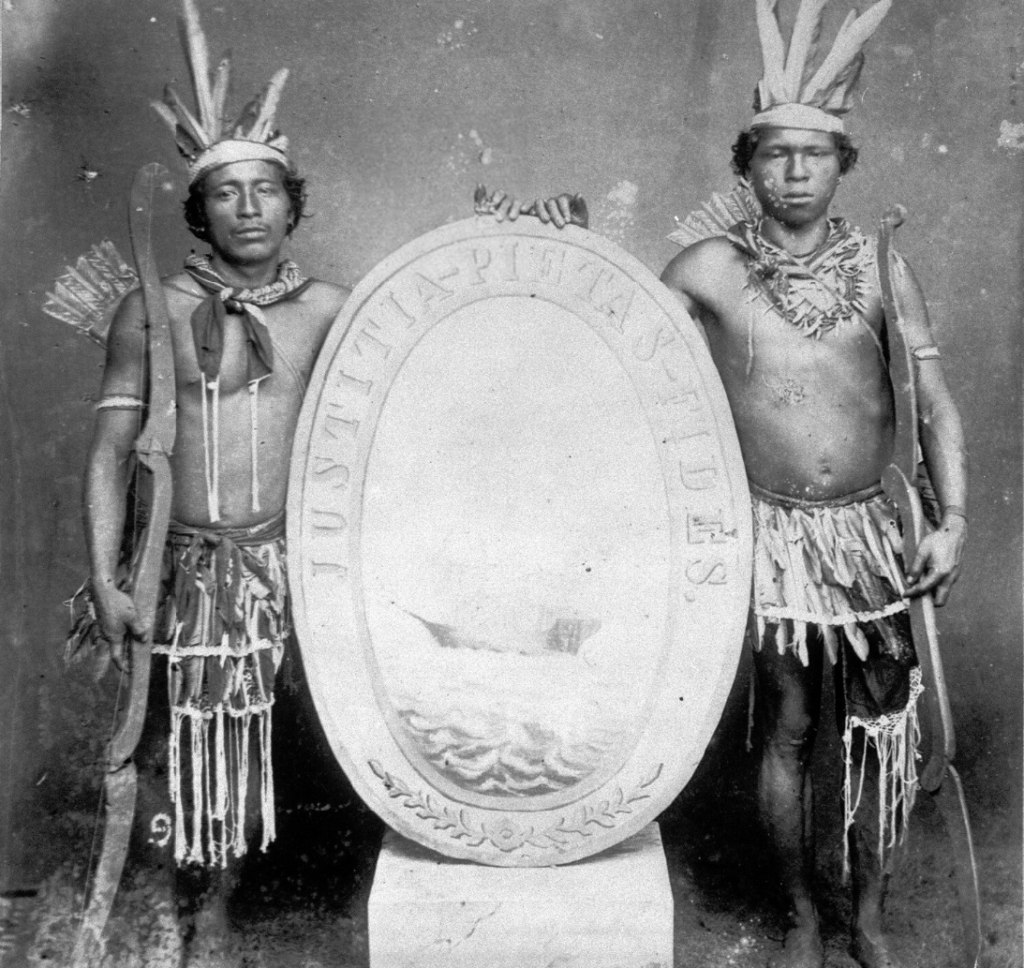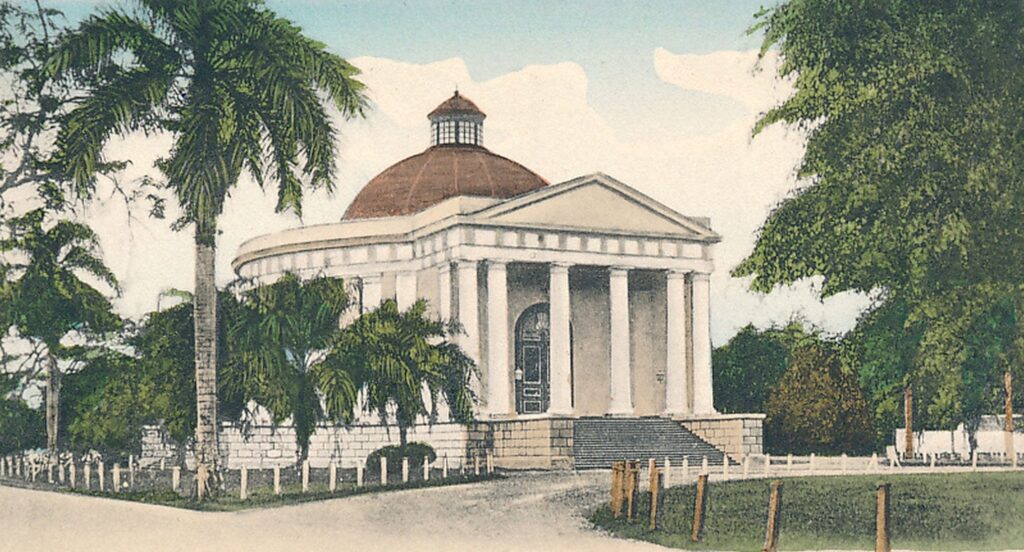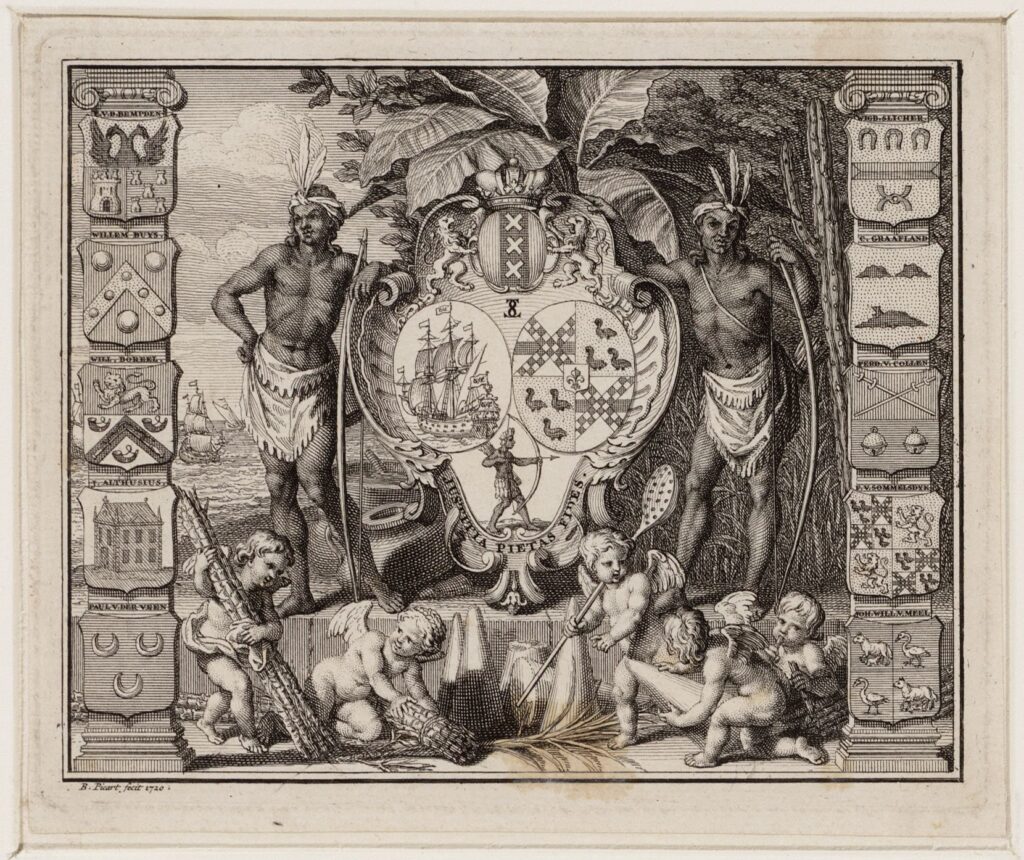Het woord ‘Bersiap’ ken ik niet uit mijn jeugd. Lang wist ik sowieso niets dan dat de familie uiteindelijk had moeten vertrekken, later pas hoorde ik over de krijgsgevangenschap van mijn grootvader in Japan, en nog weer later over de internering van mijn grootmoeder en de oudste kinderen uit het gezin op Java. In de jaren tachtig herdachten we de oorlog zoals iedereen dat deed, op 4 mei; pas na de eeuwwisseling keek ik voor het eerst mee met de herdenking op 15 augustus. Dat de oorlogsdoden in mijn directe familie aan de andere kant van de wereld vielen, en dat dáár – en niet in Nederland – de meeste pijn zat – ik wist het eenvoudig niet. Ik las geleidelijk wel meer verhalen, en hoorde getuigenissen, maar ik koppelde het niet aan een groter verhaal dat ook, direct, betrekking had op de familie Flohr. De oorlog, dat was hier. Verzetsstrijders in Nederland. De Duitsers. De slag om Arnhem, toen het appartement van mijn Nederlandse grootouders aan de Brugstraat geplunderd werd. Hun voettocht naar Apeldoorn, met de baby die later mijn oom zou worden. Dát was de oorlog.
Zo werd ik ook opgeleid: van jongs af aan was ik volgestopt met verhalen over Nederlandse geschiedenis. Een raamwerk waarin ik de geschiedenis van de familie Flohr kon plaatsen werd nauwelijks geboden – of beter: er werd over gesproken in termen die niet deden vermoeden dat je er zelf ook wel eens wat mee te maken kon hebben. De V.O.C.? Ja, belangrijk, maar niet ‘mijn’ geschiedenis, toch? Nou ja, behalve dan dat de Flohrs en de Van Gumsters in de achttiende eeuw per V.O.C.-schip naar Java bleken te zijn getrokken. Hiroshima en Nagasaki? Ver van mijn bed. Nou ja, behalve dan dat later bleek dat de bom van Nagasaki eigenlijk bedoeld was voor de plek, iets verderop in Japan, waar mijn grootvader in het werkkamp zat. Het was er die dag te bewolkt. ‘Politionele acties’? Ja, schandalig dat ze al die jongens uit de polder plukten voor een misdadige en onrechtvaardige strijd in een ver land, maar… Nou ja, later bleek dus dat mijn grootouders er via het KNIL tot over hun oren middenin hadden gezeten. Op Sulawesi, nota bene. Het geschiedbeeld dat ik in Nederland aangeboden kreeg over de wereld waarin mijn eigen familie leefde was doordrenkt van de impliciete aanname dat dit een geschiedenis was die zich ver weg had afgespeeld, en die niet direct betrekking had op mensen in het hier en nu.
Voetnoot
Nederlandse geschiedenis is altijd primair geschreven vanuit de groep die cultureel de touwtjes in handen had – en vanuit het perspectief van die groep – de ‘Nederlandse’ Nederlanders – is wat er in de eerste maanden na augustus 1945 in Indonesië gebeurde lang vooral een voetnoot geweest. Er is geen ritueel dat dat beter illustreert dan de jaarlijkse herdenking op 15 augustus: we herdenken dan de capitulatie van Japan als het ‘eind van de oorlog’, terwijl Indonesië op 15 augustus 1945 in werkelijkheid op de drempel stond van een golf van geweld die juist bij de groep die jaarlijks op 15 augustus het eind van de oorlog herdenkt diepe sporen heeft nagelaten.
Het niet-vertellen van de geschiedenis begint bij het afbakenen van wat bij ‘de oorlog’ hoort, en wat niet. De capitulatie van Japan was, op Java, niet het einde van een oorlog, maar het begin van een nieuwe fase van chaos en geweld, maar in het dominante raamwerk van onze geschiedenis is voor deze fase nooit echt een plaats geweest. Pas later, als het Nederlandse koloniale ‘gezag’ zichzelf weer een plek op Java heeft toegeëigend, gaat het narratief verder. Het is deze chaotische tussenfase die, wellicht welhaast per ongeluk, bekend is geworden onder de naam ‘Bersiap’. Vanuit Nederlands perspectief een soort historisch vacuüm, vanuit Indonesisch perspectief een revolusi, een ongecontroleerde eerste fase van een zelfstandige natie, en vanuit het perspectief van de groepen die later als migrant naar Nederland kwamen een dodelijke ramp zonder weerga.
Onomatopee
Is de naam ‘Bersiap’ historisch gezien ideaal? Ik zou zeggen: nee. Een onomatopee – want dat is het feitelijk – is wellicht zinnig als naam voor een dier (‘koekoek’, ‘oehoe’), maar voor een historische periode vol dodelijk geweld schiet de term hopeloos tekort. Het verklaart niets, en bedekt de ellende en het verdriet onder een combinatie aan klanken die in het Nederlands geen verdere betekenis heeft. Maar precies daar zit wellicht ook de kracht van de term in het dagelijks gebruik: door het leed te koppelen aan klanken die je verder toch nooit gebruikt kun je het een plaats geven buiten het dagelijkse taalspectrum, en kun je aan elkaar uitleggen wat er is gebeurd zonder zware woorden vol betekenis te hoeven gebruiken. ‘Hoe is het met je tante afgelopen?’ ‘Tsja, Bersiap…’. In die zin, zou je kunnen zeggen is ‘Bersiap’ een soort eufemisme dat een bijzonder belangrijke rol kon spelen in een groep die, zeker na de migratie, maar moeilijk kon praten over wat er nou eigenlijk precies gebeurd was – omdat het leidende historische raamwerk van het land waar men terechtgekomen was – Nederland – geen plek had voor de slecht gedocumenteerde maanden tussen Japanse bezetting en geallieerde herovering. Het maakte het onzegbare een heel klein beetje zegbaar.
Zo vormde zich, onder Nederlanders met wortels in Indonesië, geleidelijk een soort historische perceptie van de ‘Bersiaptijd’ – maar dat is niet los te zien van het feit dat deze groep de historische last van deze tijd vooral alleen moest dragen: Nederlanders waren na de oorlog verdergegaan, Indonesiërs ook – maar voor de groepen die daartussenin zaten bleven en blijven die maanden en de daarop volgende jaren essentieel – en vooral ook existentieel: niet de oorlog met Japan, maar de gebeurtenissen in de jaren erna stonden aan de basis van de migratie van de Flohrs naar Nederland. Het had allemaal zomaar anders kunnen aflopen: de definitieve keuze voor het Nederlanderschap werd pas in 1953 gemaakt – na lang twijfelen; anderen – neven en nichten van mijn grootouders – zijn gebleven – iets dat ikzelf ook pas ontdekte toen hun kleinkinderen me onlangs vriendschapsverzoeken begonnen te sturen op Facebook. Weer anderen in de bredere familie, weet ik nu, overleefden de oorlog, maar niet de chaos die volgde.
De Flohrs waren niet uitzonderlijk: de maanden na de Japanse capitulatie waren voor vrijwel alle families die later naar Nederland kwamen traumatisch, en voor al deze families gold dat ze uiteindelijk terechtkwamen in een land waar de herinnering aan deze tijd geen onderdeel zou worden van het collectieve geheugen. Ook nu nog niet: ‘Indonesië 1945-1949’ is inderdaad één van de vensters van de Historische Canon van Nederland, maar de dodelijke chaos van de eerste naoorlogse maanden wordt niet genoemd: op de proklamasi volgt, in de toelichting, een Nederlandse militaire respons. Dat daar nog wat tussen zat heeft de canon helaas niet gehaald: Nederlandse geschiedenis wordt geschreven door Nederlandse Nederlanders.
Eenzijdig
Het leidt bij mij tot een groot dilemma: vanuit mijn postkoloniale ideologische positie ben ik enerzijds zéér vatbaar voor het argument dat de term ‘Bersiap’ problematisch is. Ja, de term is hoofdzakelijk geworteld in één groep direct betrokkenen en komt voort uit de manier waarop die groep zich verhield tot de Indonesische jongeren die het extreme geweld begingen en is daarmee historisch eenzijdig. Ja, de term ontmenselijkt deze groep door hen te reduceren tot een soort subhumaan onomatopee, en ik zou niet a priori willen weglopen voor het idee dat dat geworteld is in het ingebakken racisme dat de koloniale samenleving kenmerkte. Laten we niet net doen alsof het in dat opzicht allemaal koek en ei was in de Nederlandse koloniale wereld. Dat was het niet, en dat kan ook zijn weerslag hebben op de taal die je gebruikt.
En, nee, we hebben de term ‘Bersiap’ niet nodig om de verschrikkingen ten volle te begrijpen. Sterker nog: het niet-gebruiken van de term dwingt ons – iedereen – om na te denken over hoe je nou moet noemen wat er in die maanden gebeurde. Je zou zelfs, denk ik, kunnen stellen dat een term als ‘Bersiap’ het gesprek in de weg staat: zolang je het met die term kan aanduiden, hoef je niet te definiëren of het nou gaat om een genocide, of niet. Nu de gebruikelijke term onder vuur ligt, komt subiet de discussie op gang over alternatieve terminologie. Dat is juist belangrijk – die discussie is immers nooit gevoerd, want Nederlandse geschiedenis wordt geschreven door etc. etc. etc..
Indische scherven
Maar dat is maar één kant van het dilemma. In mijn post-koloniale Indisch-Nederlandse omgeving zie ik anderzijds namelijk óók hoeveel pijn het doet: dan is er eindelijk eens wat bredere aandacht voor de periode waaraan zoveel Indische scherven verbonden zijn en dan gebeurt dat wéér eerst en vooral vanuit het perspectief van de groepen die historisch dominant zijn in de landen die bij de dekolonisatie waren betrokken – Nederlandse Nederlanders en Indonesische Indonesiërs. Dat de groep voor wie deze periode het méést definiërend is zo bruusk terzijde wordt geschoven – ‘het woord dat jullie al decennialang hiervoor gebruiken is fout, en verdient geen plek in onze publieke ruimte’ – is niet alleen ongemeen lomp en gevoelloos. Het is ook onderdeel van een terugkerend patroon van niet-erkenning en marginalisatie dat zeker voor Molukkers en Indische Nederlanders begon op het moment dat ze in Nederland voet aan wal zetten.
De Indische ‘woede’ die je ziet in reactie op het opiniestuk van Bonnie Triyana – nog even lekker aangezwengeld door de redacteur die dacht dat het leuk was om dat ‘racisme’ met chocoladeletters in de kop te zetten – die ‘woede’ gaat niet alleen om deze keuze bij deze tentoonstelling, en ‘woede’ is ook de verkeerde term: het is een combinatie van diep verdriet en radeloze onmacht – omdat het na al die jaren ook nu weer niet gelukt is om zélf de stempel te drukken op de collectieve, Nederlandse herinnering aan het historische drama dat zovelen al decennia in zijn greep houdt. Omdat, als het erom gaat, Nederlands-Indische geschiedenis te nadrukkelijk geschreven wordt door Nederlandse Nederlanders.
Miko Flohr, 13/01/2022


















